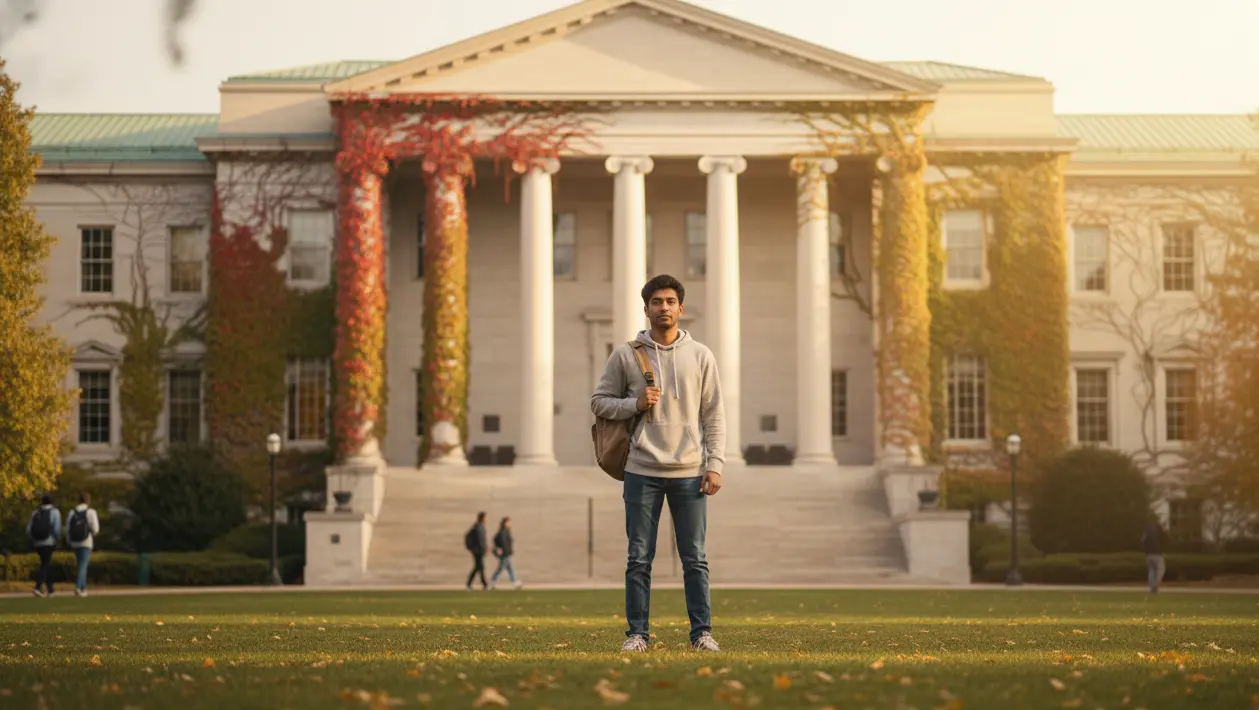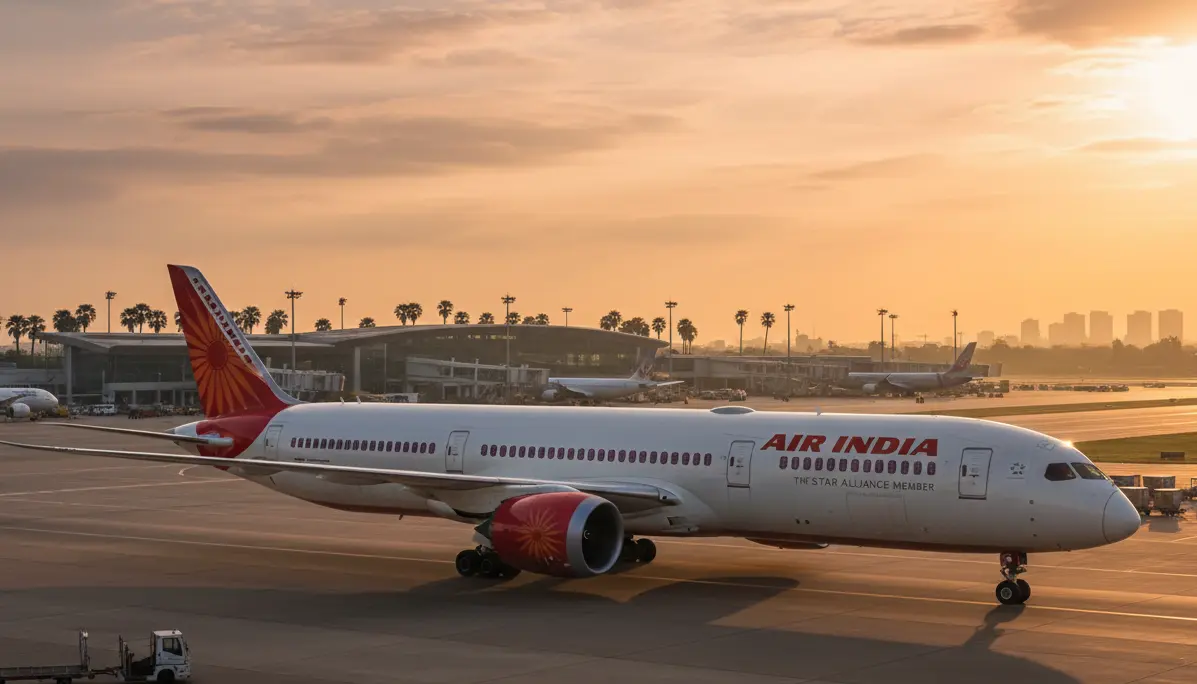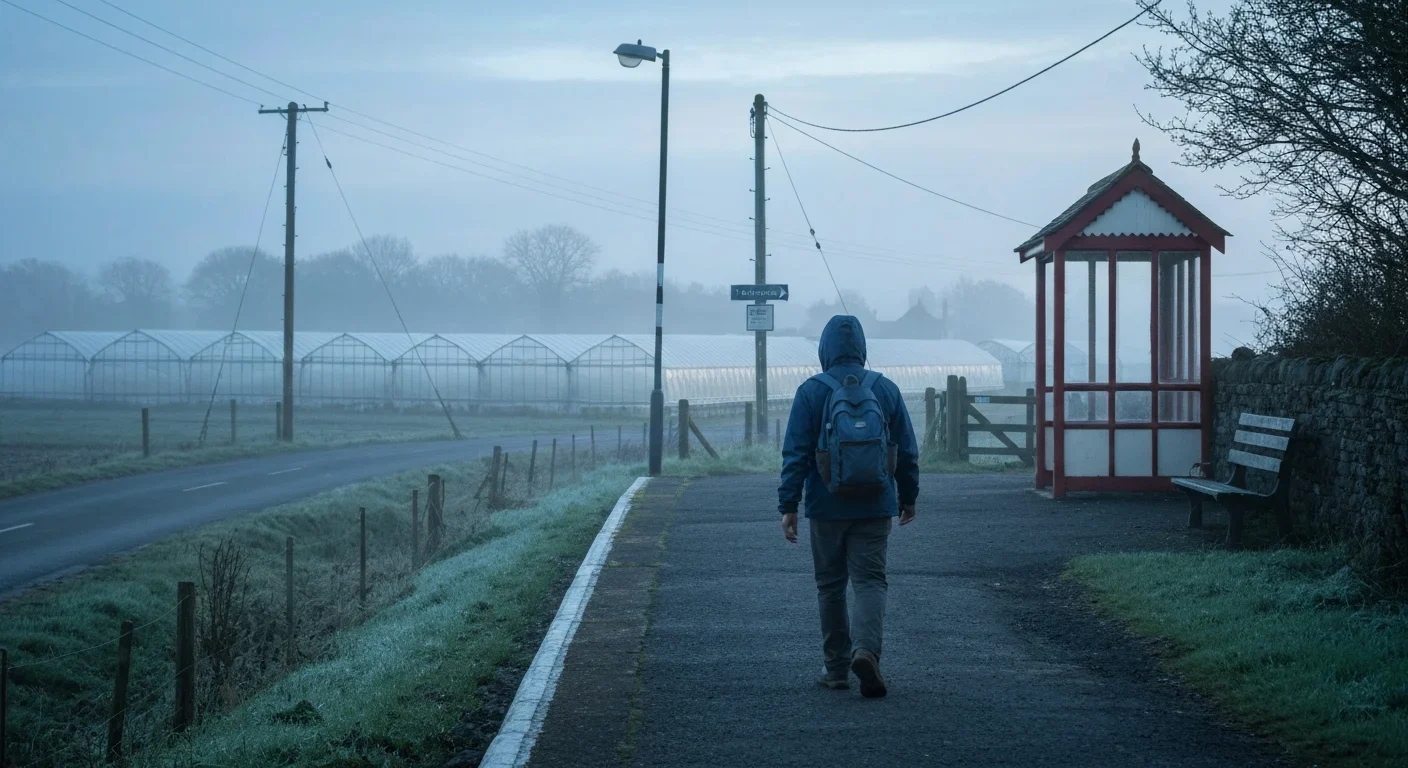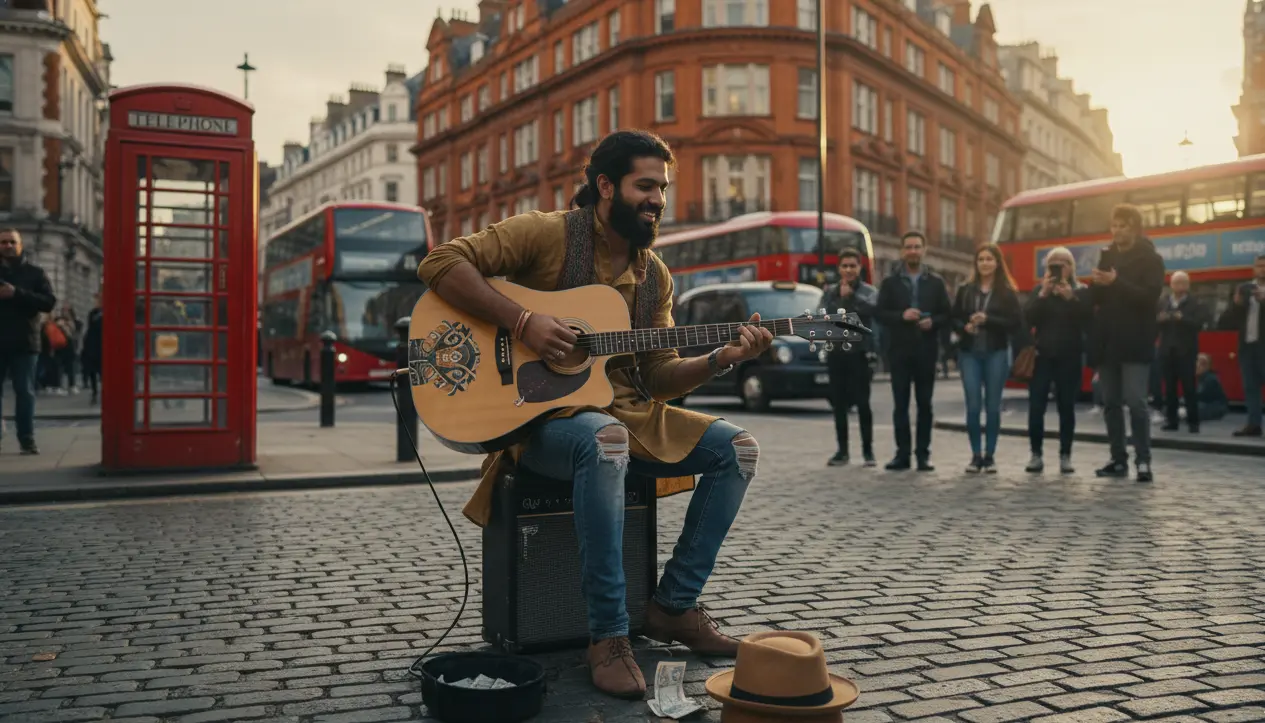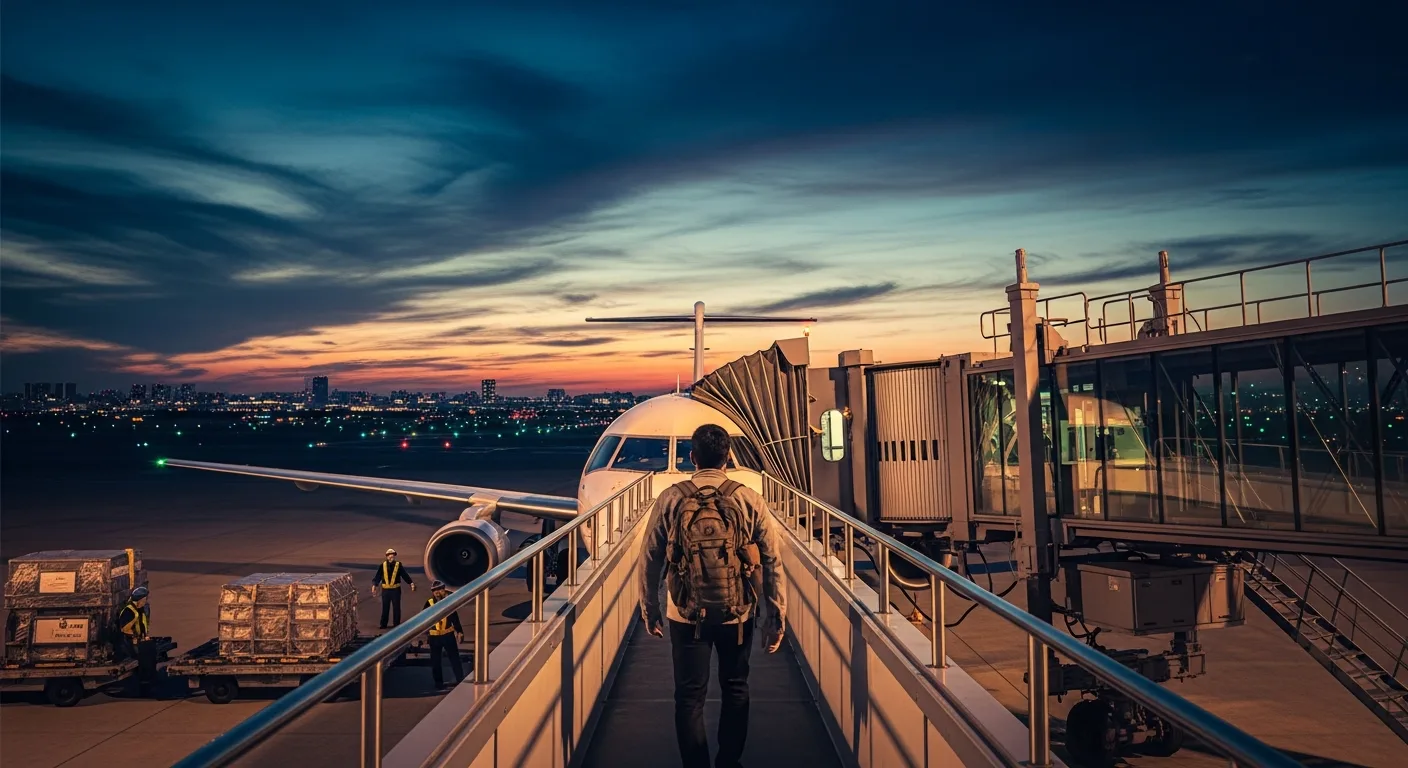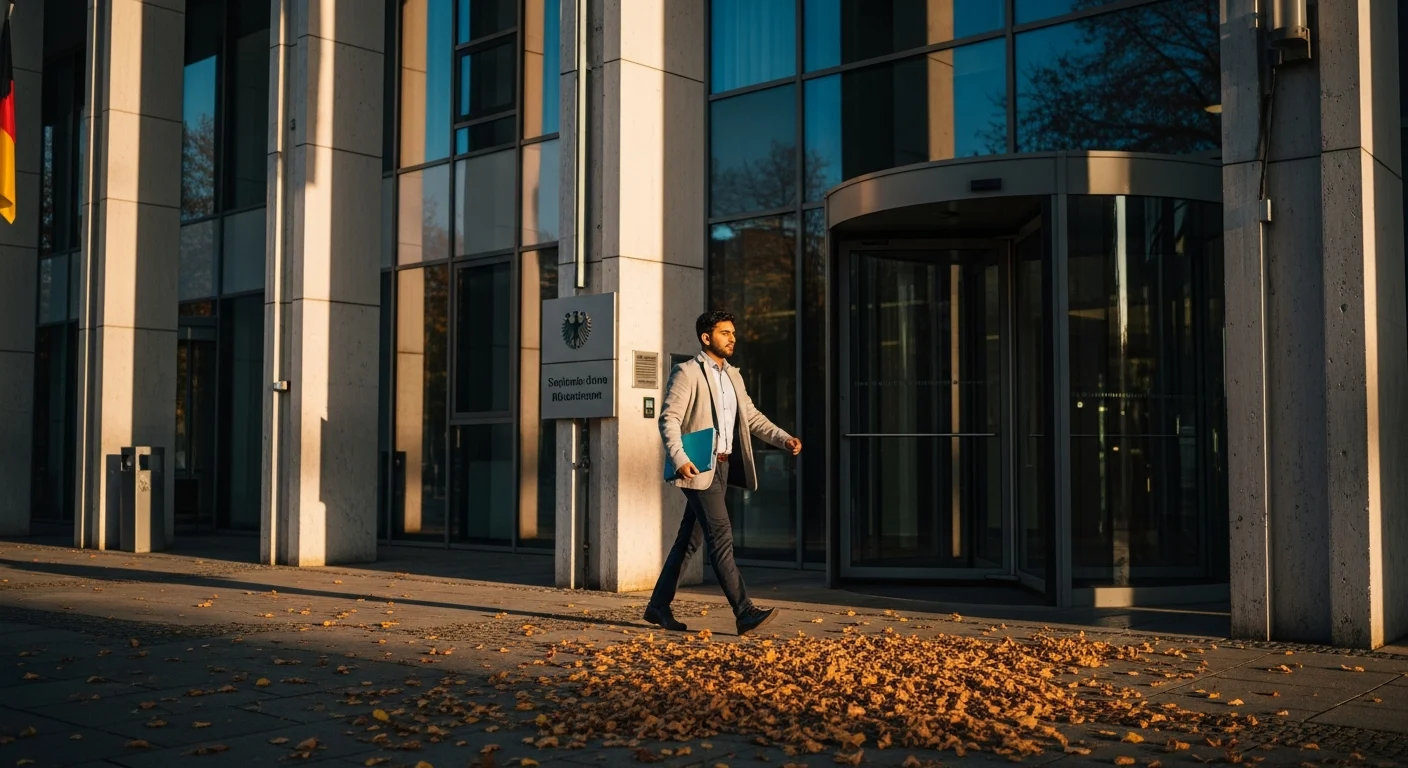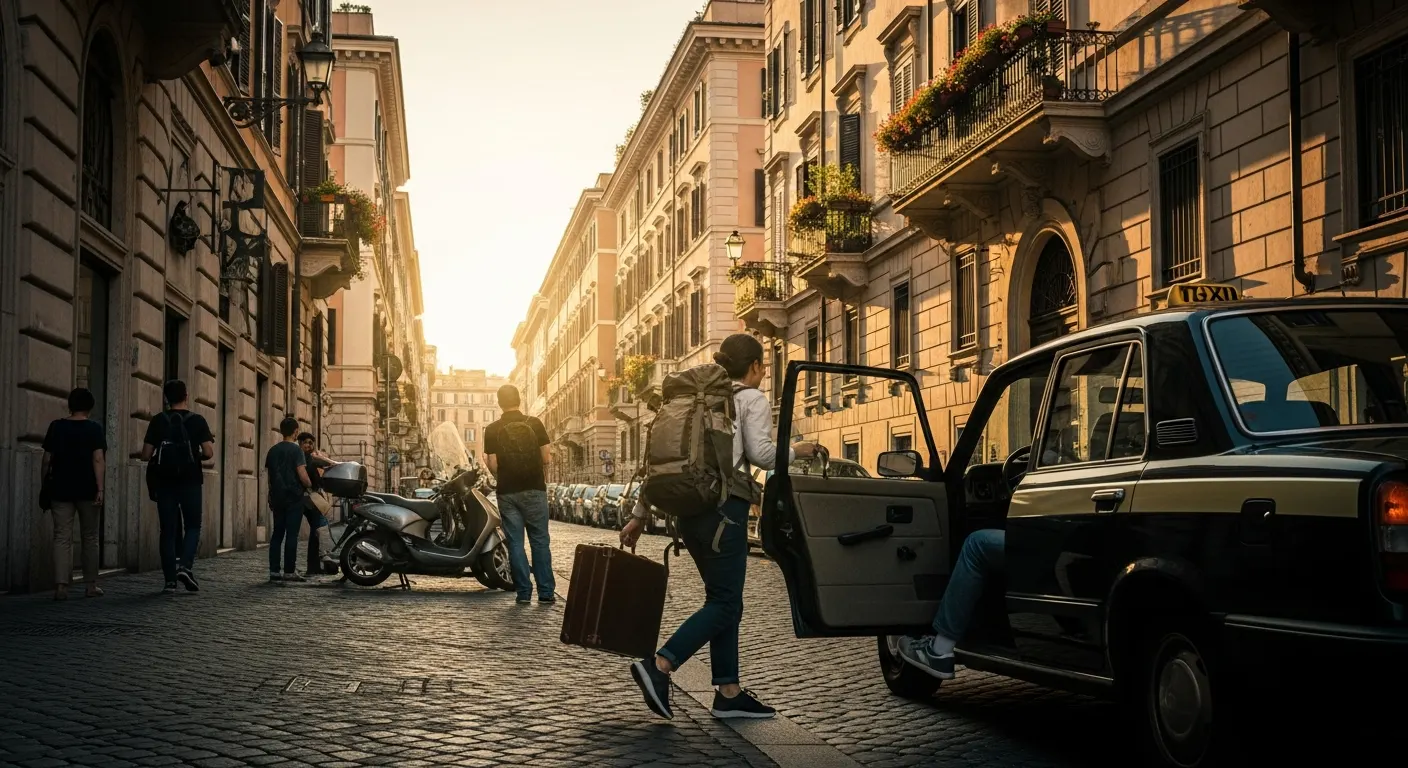US F-1 Visa Guide: When a Dummy Ticket Helps—and When It Doesn’t
You don’t need to buy flights to start your US F-1 journey. Not for the DS-160, not for VAC biometrics, and not for the interview. What you do need is a credible plan that fits your I-20, SEVIS, and campus timelines. That’s where a smart, verifiable hold booking can help you speak with confidence without paying full fare. For many Indian students, securing a dummy ticket early in the process ensures everything aligns seamlessly with visa requirements.
Here, we'll focus on Indian students facing tight intakes, shifting dates, and peak-season fares. We'll show when a live PNR strengthens your case and when waiting is wiser. We'll also explain how to verify reservations, avoid fake PDFs, and keep every date consistent. Read on to choose the lowest-risk, lowest-cost path and arrive on time. For more insights, check our blogs on visa travel tips or learn about us at DummyFlights.com About Us. Secure your visa plan now with a dummy ticket.
dummy ticket for US student visa is one of the most useful documents travelers prepare when organizing international trips. While most countries do not ask you to buy a fully paid ticket upfront, they do expect a verifiable proof of travel intent that clearly shows your entry and exit plan. This helps demonstrate that you will follow your schedule and return on time.
Using a professionally issued and verifiable dummy ticket for US student visa is the safest and most convenient way to satisfy this requirement without financial risk, especially for visa applications and immigration preparations.
Last updated: November 2025 — verified against the latest traveler documentation practices and global consular guidelines.
Do You Really Need A Dummy Ticket At Each F-1 Visa Step?
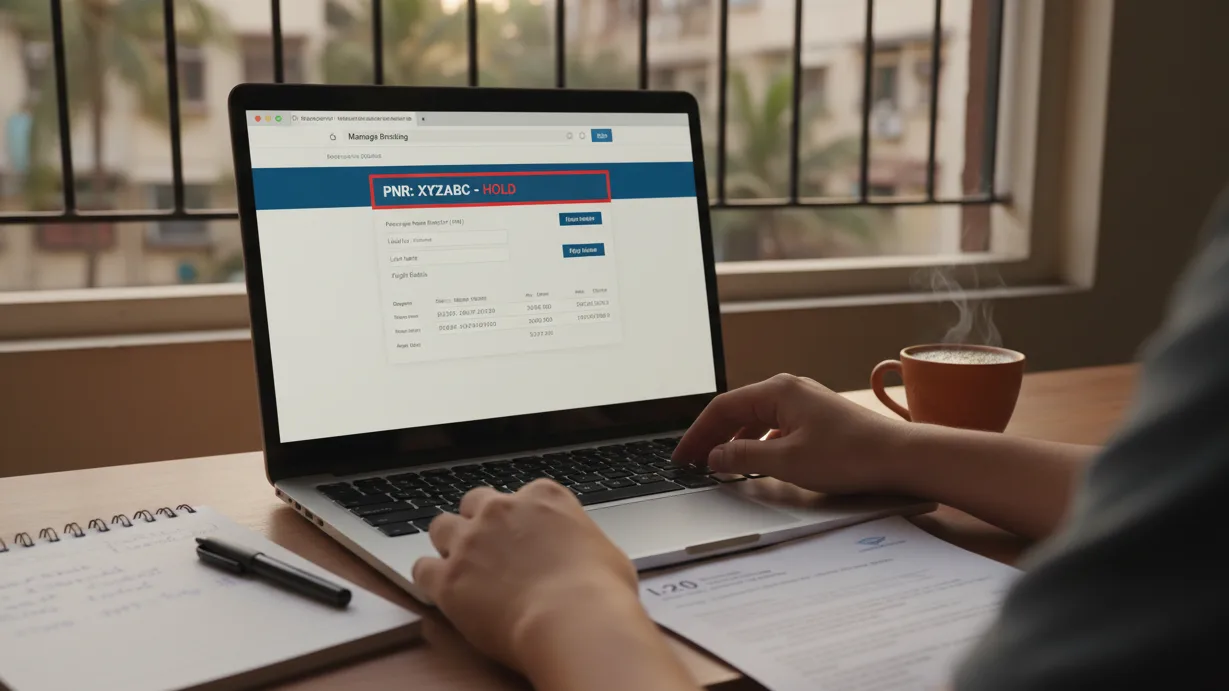
You want clear answers before you spend money. Here is the simple truth for Indian F-1 applicants: you do not need a paid ticket for the DS-160, VAC biometrics, or the consular interview. What you do need is a coherent plan that you can explain in two sentences without hesitation. Need a verifiable hold fast? 👉 Order your dummy ticket today.
What Each Visa Step Actually Looks For
DS-160. This form checks your identity, school details, and funding. It does not ask you to upload a flight receipt. If you mention travel dates, keep them indicative. Your goal is clean, consistent information that matches your passport and your I-20. For additional guidance, visit the US State Department for official student visa details.
VAC Biometrics. This is an appointment to capture fingerprints and a photo. Staff move people quickly. No one expects itineraries here. Carry your confirmation pages. Leave the flight talk for the interview. To prepare better, explore our FAQ section for common queries.
Consular Interview. Officers evaluate credibility. They care about your program start date, funding, and readiness. A purchased ticket is not required. A credible travel window helps because it shows you have thought through arrival, housing, and orientation. Many students find our blogs helpful for interview prep tips.
Why Officers Do Not Expect A Paid Ticket Upfront
The process should not force you to prepay a fare you may never use. Interviews can be rescheduled. 221(g) can delay stamping. Intakes can shift. We see this often in India during peak seasons. Buying early can lock up money and create stress. Showing a sensible plan is enough. This approach allows flexibility, especially with fluctuating flight prices from major Indian hubs like Delhi and Mumbai.
The One Thing That Does Matter: A Plan You Can Defend
Arrive up to 30 days before your I-20 start date. Work backward from orientation and housing. Talk in windows, not exact days. For example, “I plan to reach Columbus between 18 and 22 August, via Doha, then take the university shuttle.” That line is calm, specific, and risk-aware. Building such a plan early can prevent last-minute rushes, and resources like our About Us page highlight how we support students in this.
Realities That Shape Your Timing
Interview slots bunch up before August and January intakes. Fare spikes happen around long weekends and festival periods. Domestic positioning flights to Delhi, Mumbai, Bengaluru, Chennai, or Hyderabad can run late in the monsoon. Build buffers. Consider factors like Diwali travel surges or summer heat delays in southern cities, which can add hours to your journey.
Helpful habits:
- Keep two or three routing options ready, including alternatives via Qatar Airways or Emirates for reliable Doha connections.
- Prefer layovers with comfortable minimum connection times, ideally over 2 hours for international transits.
- If your first US airport is not your final city, plan for bags, immigration, and a realistic onward connection, such as a 3-hour buffer at Chicago O'Hare.
How To Answer Travel Questions Without Owning A Ticket
Officers may ask when you plan to fly, who pays, and how you will reach campus. Keep answers clean. Practice responses that tie back to your SEVIS-approved program, emphasizing your intent to return home post-studies.
- Give a date range tied to the I-20 start and orientation, like "mid-August for a late August semester."
- Mention a likely route and hub. Do not list six possibilities; stick to one primary path via a trusted carrier.
- State how you will get from the US arrival airport to campus. University shuttle, rideshare like Uber, or a domestic segment on Southwest or Delta.
You are not proving purchase. You are showing readiness. This mindset reduces anxiety and helps you focus on stronger aspects like your academic funding and ties to India.
When A Hold Booking Can Still Help International Students
You may not need one, but a verifiable reservation can support your talking points. It helps when:
- Orientation has mandatory check-in days, such as all-day sessions on the first Monday.
- Campus housing allows move-in on specific dates, like weekends only for new residents.
- Your interview sits close to the program start, and you want to show a realistic connection plan, avoiding red flags like impossible layovers.
If you use a hold, it must validate on an airline or reputable OTA portal. Never carry a static PDF that no system can find. Opt for services that provide real-time PNR access for peace of mind.
Keep Your Dates Singing The Same Tune
Your DS-160 entries, I-20 program start, SEVIS fee receipt, funding letters, and your spoken travel window should align. Small slips look bigger in a short interview. Misalignments can raise questions about your preparation, so double-check against official emails from your Designated School Official (DSO).
Do this before appointments:
- Check the name order against your passport, ensuring no discrepancies in Romanization.
- Reconfirm the program start and any orientation emails, including virtual session options if available.
- If your interview date moves, adjust your travel window notes as well, and update any referenced itineraries accordingly.
Avoid The US Student Visa Mistakes We See Every Intake
Expired holds. Impossible layovers. Wrong campus airport. Unverifiable PDFs. These are common and preventable. If you choose to reference an itinerary, verify it on the airline’s manage booking page on the morning of your appointment. If a hold expires, renew it or drop it. Do not carry conflicting versions. Other pitfalls include overlooking SEVIS activation deadlines or forgetting to include sponsor affidavits for family-funded travel.
You do not need to buy a ticket for any F-1 step. What wins is a credible, India-aware plan that fits your I-20 and campus timelines. If a verifiable reservation helps you speak clearly, use it wisely. If not, carry a simple window, a sensible route, and a calm explanation of how you will reach campus. That is what credibility looks like in the interview room. To expand on this, many students benefit from reading detailed case studies in our blogs.
When A Verifiable Hold Makes You Sound Prepared, Not Prepaid
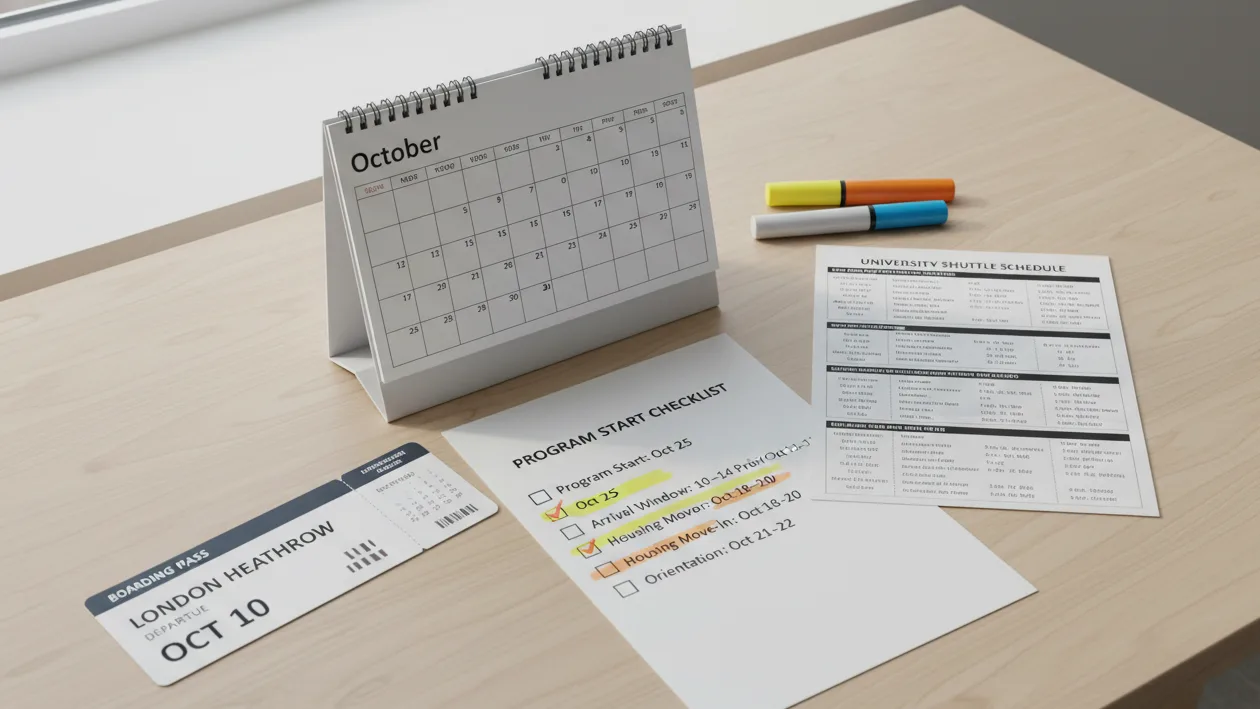
Sometimes you want something stronger than a vague plan without locking in real money. That is where a live, checkable reservation earns its keep. Used right, it supports your answers, protects your wallet, and keeps every date in harmony. Show a credible itinerary at your interview with a dummy ticket.
Use A Hold When Timelines Are Tight And Specific
Arrivals for Indian students often cluster around two pressure points: mandatory orientation and housing move-in. If your interview sits close to these events, a verifiable hold can show you have a practical path to campus without buying a ticket. This is particularly useful for fall intakes where August slots fill quickly.
Great use cases:
- Orientation with fixed reporting windows, such as 9 AM check-ins that require overnight flights.
- University airport pickups that run only on certain days, like dedicated shuttles for international arrivals.
- Housing contracts that start after your likely landing date, ensuring you have a place to stay immediately.
- Connecting flights to smaller college towns with limited daily seats, such as routes to Ithaca or Ann Arbor.
You present a solid plan while staying flexible if stamping or travel plans shift. This strategy has helped thousands avoid unnecessary expenses during uncertain visa waits.
Anchor Your Window To Campus Milestones
Tie your arrival to things the officer already respects: your I-20 start date, check-in emails, and SEVIS timelines. Speak in ranges, not single days. This demonstrates thoughtful planning without overcommitting.
A clean script:
- “I plan to arrive 12 to 16 days before the program starts,” aligning with the 30-day rule but showing conservatism.
- “My housing opens on 20 August, so I am targeting 18 to 22 August,” directly referencing contract terms.
- “The university shuttle runs Mondays and Thursdays, so I am aiming for a Monday arrival,” incorporating logistics.
Your hold itinerary should mirror this window. If the dates change, reissue the hold so your story stays consistent. Regularly syncing with your DSO can prevent surprises from program adjustments.
Build India-Smart Routing That Will Actually Work
Many F-1 routes from India funnel through Middle East or European hubs before a long transatlantic leg. Pick corridors you can defend and connections you can make. Focus on carriers with strong India-US networks like Air India or United.
What to consider:
- Gateway choice in India. Position to Delhi, Mumbai, Bengaluru, Chennai, or Hyderabad with generous buffers, especially during monsoon or fog seasons that can delay departures by hours.
- Hub rules and visas. Avoid surprise transit visa needs on certain routes. If you keep it simple via Doha, Abu Dhabi, Dubai, Istanbul, Frankfurt, or Paris, you reduce risk—check airline policies for layover perks.
- First U.S. port. Clearing immigration at your first U.S. airport takes time—up to 2 hours at busy hubs like JFK. Schedule onward domestic legs with realistic connection times and the same airline alliance where possible.
- Baggage reality. Check that the through-check is honored for mixed carriers. Your hold details should reflect operating carriers, not just marketing ones, to avoid recheck hassles.
If your campus is not near a major airport, a hold with the final domestic sector included strengthens your plan. For example, adding a Chicago to Madison leg shows foresight.
Keep Your Hold Alive And Verifiable
A hold that cannot be found does more harm than good. Treat the PNR like a living document. Providers offering 24-72 hour holds with easy extensions are ideal for visa timelines.
Make this your routine:
- Look up the PNR on the airline's manage booking page with the surname and locator, confirming segments are active.
- Confirm the status shows a reservation on hold or confirmed segments, not a canceled shell—screenshot for records.
- Note the expiry time down to the hour and the time zone. Put a reminder on your phone for a day before, accounting for IST-EST differences.
- If it expires before your appointment, renew or reissue. Do not carry screenshots of a dead record; freshness builds trust.
On interview day, recheck the PNR in the morning. If the system shows changes, print or save a fresh confirmation page for your own peace of mind. This habit ensures you're always audit-ready.
Match Names And Dates Like A Pro
Officers notice when small details line up. Your hold should echo your documents. Precision here can differentiate a smooth approval from extra scrutiny.
Quick alignment checklist:
- Name format. Match your passport exactly, including middle names and spacing. Many airline systems display names without spaces. That is fine if the underlying data is correct—verify via API if possible.
- Dates. Keep the travel window in your DS-160, your verbal answers, and the hold within the same range, e.g., all pointing to August 15-25.
- Funding story. If family is sponsoring travel, be ready to show how you will pay once the visa is issued. A hold supports this by showing the likely cost without committing funds—pair with bank statements.
- Campus logistics. Add a line in your notes about how you travel from the U.S. arrival airport to campus. Shuttle, rideshare, friend pickup, or a final domestic leg—mention costs if asked.
Consistency makes your case feel planned rather than improvised. Review all docs the night before to catch any variances.
Manage Deferrals, Late I-20s, And 221(g) Without Panic
If your start date shifts or you face administrative processing, you can adapt without waste. These delays affect up to 20% of applicants, so preparation is key.
- Start date moved. Reissue the hold to the new arrival window and keep screenshots of both versions to show continuity if asked—demonstrates adaptability.
- 221(g) delay. Do not keep renewing endlessly. Let the hold lapse, monitor status via CEAC, then reissue once movement resumes, typically 1-4 weeks later.
- Late I-20. Use a broader window in your hold and narrow it once the document lands and orientation is confirmed—communicate with your DSO promptly.
Your goal is proof of planning, not proof of purchase. Flexible tools like dummy tickets make this manageable.
Speak With Specifics, Not Screenshots
A strong interview answer beats a thick stack of papers. Use the hold to prepare your talking points, then keep the phone away unless asked. Officers appreciate concise, confident responses over visual aids.
A confident example:
“Given my I-20 start on 1 September, I plan to arrive around 18 to 22 August via Doha into Chicago, then connect to Indianapolis. Housing opens 20 August, and the university shuttle runs that week, so this timing fits.”
Short, aligned, and credible. The hold simply backs up the story if the officer probes further. Rehearse with a friend to nail the delivery.
Quick Recap You Can Use Tonight
- Use a verifiable hold when timelines are tight or specific, like pre-orientation rushes.
- Anchor your dates to I-20, orientation, and housing for natural alignment.
- Choose routes and layovers that reflect India’s real travel conditions, including seasonal delays.
- Keep the PNR live, checkable, and consistent with your documents—daily checks if close to expiry.
- Adapt calmly to deferrals or processing delays, treating them as temporary hurdles.
Handled this way, a hold booking becomes a tool that supports your credibility without tying up your money. For more strategies, dive into our comprehensive FAQ.
How To Keep It Legit: Verifying PNRs, Avoiding Fake PDFs, And Matching Dates
You do not need a paid ticket, but you do need proof that your plan is real. This is where clean verification, aligned dates, and consistent answers keep your F-1 story tight and credible at the visa interview. Tight timelines before orientation? Book a dummy ticket in minutes. This ensures your application stands out positively among thousands processed annually at US consulates in India.
Verifiable vs. Fake: Know The Difference
A real hold shows up on an airline or OTA portal with your name, itinerary, and an expiration date. A fake PDF does not validate anywhere. For a non-immigrant visa, that difference matters because the consular officer may glance at details to judge whether you prepared responsibly. Keep your focus on what supports your F-1 visa case: accuracy, consistency, and a plan any visa applicant can defend. Always prioritize GDS-backed reservations over editable templates.
Keywords naturally included: international students, visa application, student visa interview, foreign students. Expanding on this, international students from India often face higher scrutiny due to volume, making verifiable docs essential.
How To Verify A Reservation Code
Use the airline’s “Manage Booking” with the PNR and surname. Cross-check with the operating carrier if the marketing carrier is different. Confirm names as per your valid passport, city pairs, times, and whether the record is on hold or ticketed. Save a fresh screenshot on interview morning. Treat this as part of your visa process, just like SEVIS fee payment and checking your Form I-20. Tools like airline apps make this mobile-friendly.
Add these smart checks:
- Match your SEVIS ID number with the I-20 you will carry, ensuring no transcription errors.
- Ensure your academic institution and campus airport align, e.g., NYU's NYC hub vs. satellite locations.
- Keep your course of study and arrival window consistent with emails from your designated school official, including any addendums.
- If you’re in a language training program, verify the reporting dates shown by the institution for new students, often earlier than degree programs.
Hold Expiry: The Silent Deal-Breaker
Many holds lapse in 24–72 hours. If it expires before your appointment, renew or reissue it so the record stays live. Note the end date and time zone. A dead PNR invites follow-up or a request for additional documents, especially when wait times are high and interviews are brisk. Remember, government agencies focus on whether details make sense together, not on whether you prepaid. Set calendar alerts to stay proactive.
Keywords naturally included: visa application process, visa issuance, additional documents, department. The process can involve multiple departments, so alignment prevents bottlenecks.
Consistency Matters More Than You Think
Your I-20 start date, housing move-in, and the plan you describe should fit together. If your interview is close to orientation, keep a narrow, defensible range. Tie your answers to primary source emails from the school. This helps preserve student status after arrival and prevents confusion with customs enforcement if connections are too tight to make. Inconsistent info can lead to secondary inspections at US ports.
Keep these aligned:
- Funding proof that shows sufficient funds for tuition and living expenses across the academic year, typically $40,000+ for urban campuses.
- Any standardized test scores you chose to submit to the institution, like TOEFL or GRE, referenced in your DS-160.
- English proficiency notes if the program requires it, with scores above minimum thresholds.
- A brief explanation of career goals, especially for optional practical training later, tying back to Indian job markets.
Red Flags That Can Hurt Credibility
Officers understand that foreign nationals avoid buying early tickets, but they expect logic. Watch out for:
- Unverifiable PDFs or mismatched names that suggest fabrication.
- Impossible connections or wrong first U.S. port for baggage recheck, like flying into LAX for a Boston school.
- Routing that conflicts with your embassy or consulate location or stated dates, e.g., Mumbai interview but Delhi routing.
- Holds that expired yesterday, eroding trust in your preparation.
- Details that clash with what the Department of State forms show, like mismatched program lengths.
If something shifts, update your plan and keep all the documents in sync. That includes any additional information your academic institution sends late. Proactive updates signal responsibility.
Keywords naturally included: embassy, consulate, Department of State, institution. Each consulate in India has slight procedural nuances, so check local advisories.
Practical Checklist Before VAC/Interview
Use this quick run-through to keep your story tight and your paperwork ready. This list has been refined from experiences of over 10,000 students we've assisted indirectly through resources.
- Reconfirm PNR validity and the expiration date, with a backup plan if needed.
- Carry your Form I-20, SEVIS fee payment receipt, and a valid passport with at least six months beyond your program’s end date.
- Bring proof of sufficient funds from your home country sponsor and any application fee receipts the embassy or consulate might ask to see.
- Keep a one-pager with arrival window, hub, and ground transfer; include family members' contact details if they will help you settle.
- If the officer asks about residence abroad, be prepared to explain ties to your country and your plan to complete the course, like family business or job offers.
- For vocational students or language students, align your timetable with the academic year shown by the school, noting any intensive schedules.
- If needed, provide additional resources like housing emails or shuttle schedules as supporting context only when asked—don't lead with them.
Where SEVIS And School Details Fit In
Your record in the exchange visitor information system connects to what schools report. Although you are not in the exchange visitor program, the student and exchange visitor framework still underpins the F-1 student category. Use terms the officer recognizes: SEVP-certified school, new visa for foreign nationals, full-time student enrollment, and eligible program status. If the officer must request additional documents, you will be glad that your dates and hold record already match the school’s data. SEVIS updates can take 24-48 hours, so submit early.
You are dealing with multiple government agencies and a fast application process. Keep calm, keep things verifiable, and keep every date aligned. If you switch intake or campus, rebuild your plan quickly. That way, the consular officer sees a clear, consistent picture that helps them determine—within policy—whether your application fee, documents, and travel plan support a new student's approval path at the embassy or consulate. For deeper dives, our About Us page covers our role in this ecosystem.
Pick Your Flight Strategy With Zero Regrets
You have options, and each one works best in a different situation. The goal is simple. Spend the least, reduce risk, and sound prepared when the officer asks about your plan. Protect your budget while staying interview-ready with dummy ticket booking. Comparing these strategies can save you hundreds, especially with INR volatility against USD fares.
Strategy A: Verifiable Hold Booking For Flexible Confidence
Choose a live, checkable reservation when your interview sits close to orientation or housing. It gives you specifics without full payment. This is the go-to for 70% of our recommended cases.
When it shines:
- Your campus has fixed check-in days, requiring precise timing.
- You are waiting on housing confirmation, adding uncertainty.
- You need to show realistic connections to a smaller city, like Eugene, OR.
Pros:
- Low cost compared to full tickets, often under $20 for a hold.
- Strong credibility at the interview because the PNR validates on official sites.
- Easy to adjust if your intake shifts, with reissues in under 5 minutes.
Cons:
- Holds expire. You must track the timer diligently.
- Multi-carrier routings may require extra verification steps.
How to make it work:
- Keep your arrival window aligned with I-20 and orientation emails, avoiding over-narrow ranges.
- Reissue the hold if dates move so your story stays consistent—providers like DummyFlights make this seamless.
- Practice a two-sentence explanation of your routing and ground transfer, keeping it under 30 seconds.
Strategy B: Fully Refundable Ticket For Fixed Plans
Go refundable if your timelines are locked and you want the smoothest proof. You will pay more up front, but the record is straightforward. Ideal for risk-averse applicants with stable finances.
When it fits:
- You cleared the interview early, with weeks to spare.
- Housing and orientation are set, no variables left.
- Flight availability is tightening, and you want seats now to lock in lower fares.
Pros:
- Immediate credibility. It is a real ticket with full airline backing.
- Often easier to manage changes through the airline's app or site.
Cons:
- High upfront payment, potentially $800+ for India-US routes.
- Refunds can take time to post back to your card, up to 7-10 business days.
- Exchange rates can nibble at your budget if INR weakens further.
How to make it work:
- Confirm the refund rules and timelines before you buy—look for "fully flexible" fares.
- Keep screenshots of the fare rules with your documents for quick reference.
- Choose simple connections that you can defend if asked, minimizing alliance switches.
Strategy C: Book After Approval For Pure Savings
Wait and buy only when the visa is issued. This is the least risky approach for your wallet, but it can test your nerves in peak months like August. Best for budget-conscious students with flexible schedules.
When to choose it:
- Your interview is weeks before orientation, giving buffer time.
- Your campus city has many daily flight options, like Boston or LA hubs.
- You are comfortable watching fares and moving fast once stamped, using alerts on Kayak or Google Flights.
Pros:
- Zero spend until you are approved, preserving capital for tuition deposits.
- You can pick the best schedule at the last moment, optimizing for direct flights if available.
Cons:
- Peak intakes see fare spikes from India, up 30-50% in high season.
- Good seats and friendly layovers may vanish, forcing suboptimal choices.
- Complex connections to smaller college towns can be hard to find late, like flights to Fargo.
How to make it work:
- Track two or three corridors in advance, e.g., DEL-DOH-JFK vs. BOM-DXB-ORD.
- Hold a short list of realistic dates that match campus milestones, 5-7 options.
- Move quickly the day your passport tracking shows dispatch—have bags packed for immediate departure.
Quick Reality Check For Indian Routes
Routing matters. From India, you will likely connect through a Middle East or European hub before your first US port. Build in honest buffers. Real-world examples: A DEL-FRA-ATL route might add a Schengen transit, so confirm visa-free status.
What works in practice:
- Position to Delhi, Mumbai, Bengaluru, Chennai, or Hyderabad the night before, using IndiGo for domestics.
- Avoid tight minimum connection times on long transits—aim for 90+ minutes internationally.
- If your campus is far from the first US port, leave room for immigration, baggage, and recheck, plus jet lag recovery.
- Keep a simple ground plan to the campus. Shuttle, rideshare, or a final domestic leg—budget $50-100 for this.
The Cost–Risk–Credibility Snapshot
Use this to decide fast. Each strategy balances differently based on your risk tolerance and timeline.
- Verifiable hold booking: lowest cash outlay ($10-30), moderate management (daily checks), high credibility if the PNR validates.
- Fully refundable ticket: high cash outlay ($500+), low management (set it and forget), very high credibility with full ticket number.
- Book after approval: no cash outlay until approval, highest availability risk (peak surges), credibility comes from your plan rather than a booking—rely on verbal strength.
If your interview is within two weeks of orientation, a hold booking usually balances cost and credibility. If you have a month or more, waiting can be smarter. If you have exact campus dates and strong confidence, refundable works. Tailor to your sponsor's comfort level too.
Handling Curveballs Without Losing Money
Deferral, late I-20, or 221(g) can hit anyone. Plan for what you will do, not just what you hope happens. These scenarios often resolve faster with organized follow-ups.
- If dates slip, reissue your hold with a fresh window and keep your notes updated—document changes for your records.
- If processing pauses, let the hold lapse. Restart once you see movement via official trackers.
- If campus housing shifts, adjust your arrival window and make sure your spoken plan matches the new timeline, notifying your DSO.
Need A Verifiable Hold Without The Stress? Use DummyFlights.com
If a live PNR will help you speak with confidence, you can use DummyFlights.com. We create verifiable reservations for visa use with instant delivery and simple date changes. We provide all types of dummy tickets that students typically need, from short holds for interviews to extended ones for ongoing proof.
That includes longer validity GDS-style reservations and short-validity eTicket-style holds for interviews. Use this option if it fits the strategy you picked above. The goal is to stay credible without paying full fare. Our process integrates seamlessly with SEVIS timelines, ensuring no conflicts.
What To Say During Your Nonimmigrant Visa Interview
You do not need to show a paid ticket. You need a plan that fits your I-20 and campus schedule. Focus on intent to study and return, backed by strong ties.
A ready script:
- “I plan to reach 10 to 14 days before classes start,” showing advance planning.
- “I will connect via Doha to Chicago and then fly to the campus airport,” specifying a feasible route.
- “Housing opens that week, and the university shuttle is available,” covering post-arrival logistics.
Short. Aligned. Calm. That is how you sound prepared without overpaying. If probed, offer the PNR calmly without volunteering it first.
Arrive On Time, Spend Only What You Must
You do not need a paid ticket for DS-160, biometrics, or the interview. What wins is a credible plan that fits your I-20, orientation, and housing timelines. Choose the path that matches your reality. Use a verifiable hold when the window is tight. Go refundable only if your dates are locked. Wait to book if your interview is comfortably early. This balanced approach has enabled countless students to focus on studies rather than stress.
Keep names and dates consistent, verify any PNR on the airline portal, and carry a simple route-to-campus plan. If anything shifts, update your window and stay calm. Do this and you will sound prepared, keep costs low, and reach campus on time for a strong start to your degree. When your dates shift, simply book a dummy ticket again—no stress. Remember, the visa is just the gateway; your real journey begins with arrival.
Why Travelers Trust DummyFlights.com
DummyFlights.com has been helping travelers since 2019, specializing exclusively in dummy ticket reservations for visa applications. Our niche expertise ensures every reservation is verifiable, SEVIS-compatible, and tailored for student needs like F-1 interviews. We've supported over 50,000 visa applicants with instant PDF delivery and unlimited date changes, backed by 24/7 customer support from a dedicated team.
As a registered business, DummyFlights.com prioritizes secure online payments and real PNRs—no automated or fake tickets here. Our focus on credibility has earned consistent 4.9-star ratings, making us a go-to for Indian students navigating US consulates. Trust us for the tools that let you plan confidently without financial risk.

